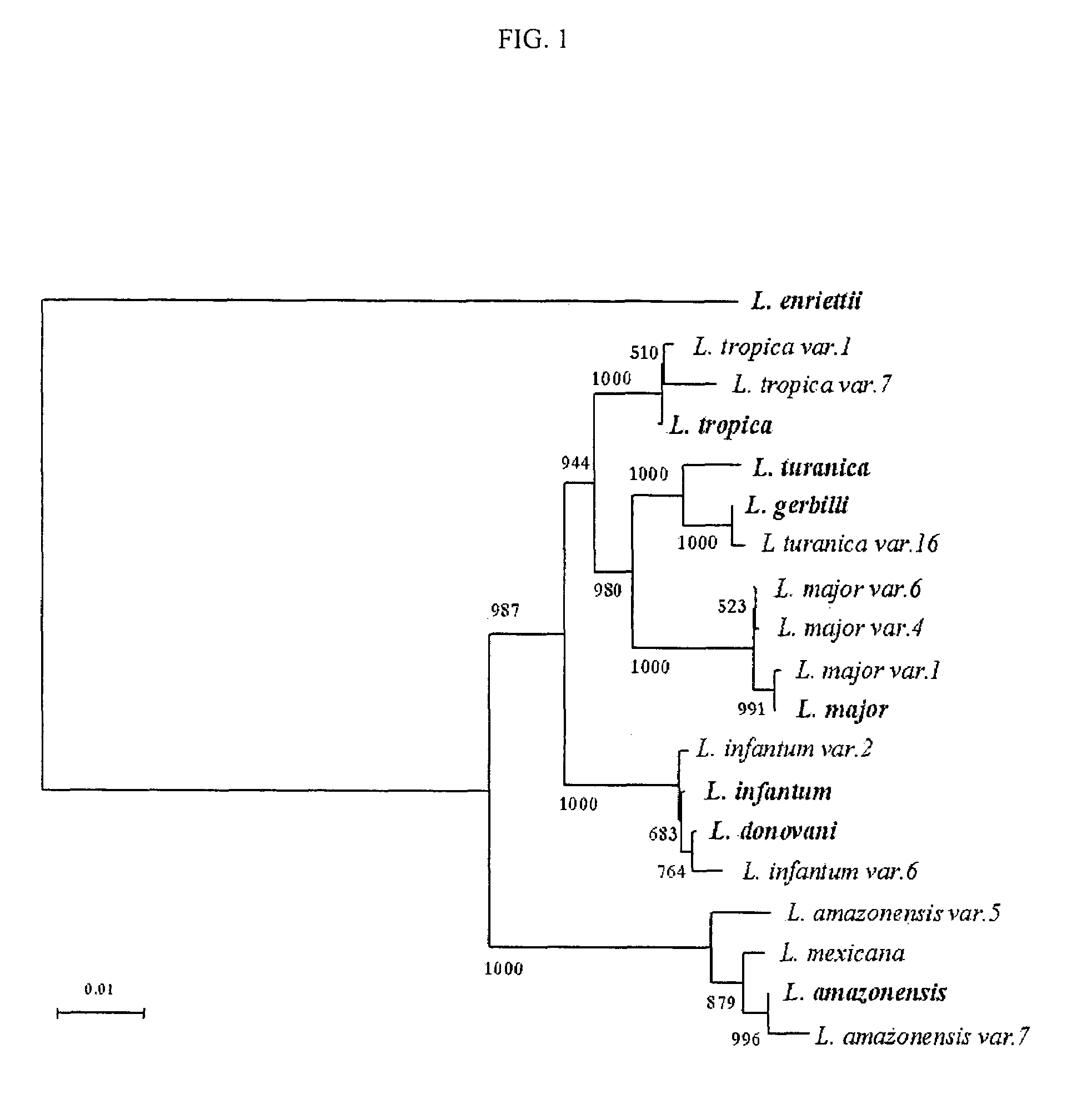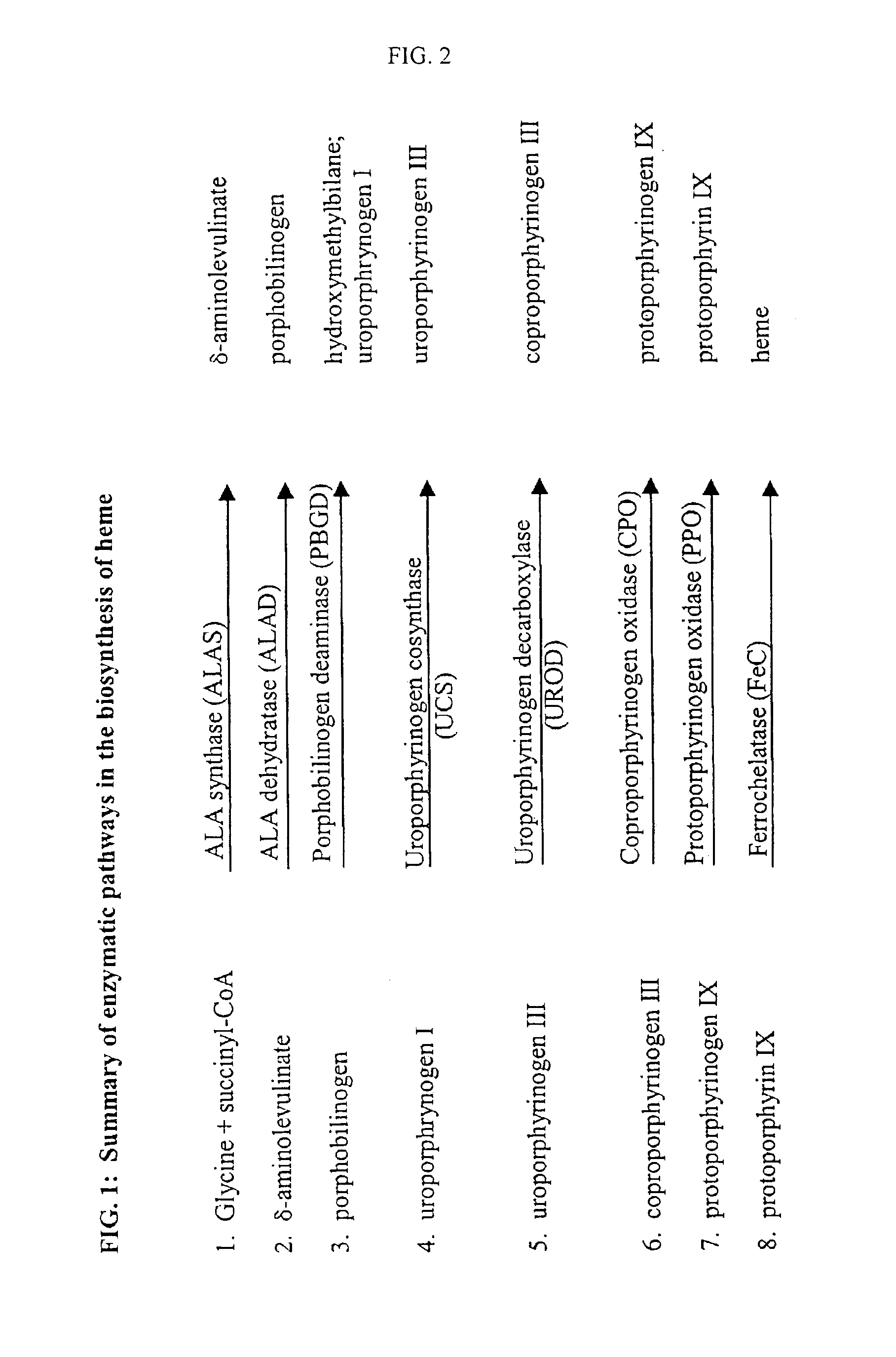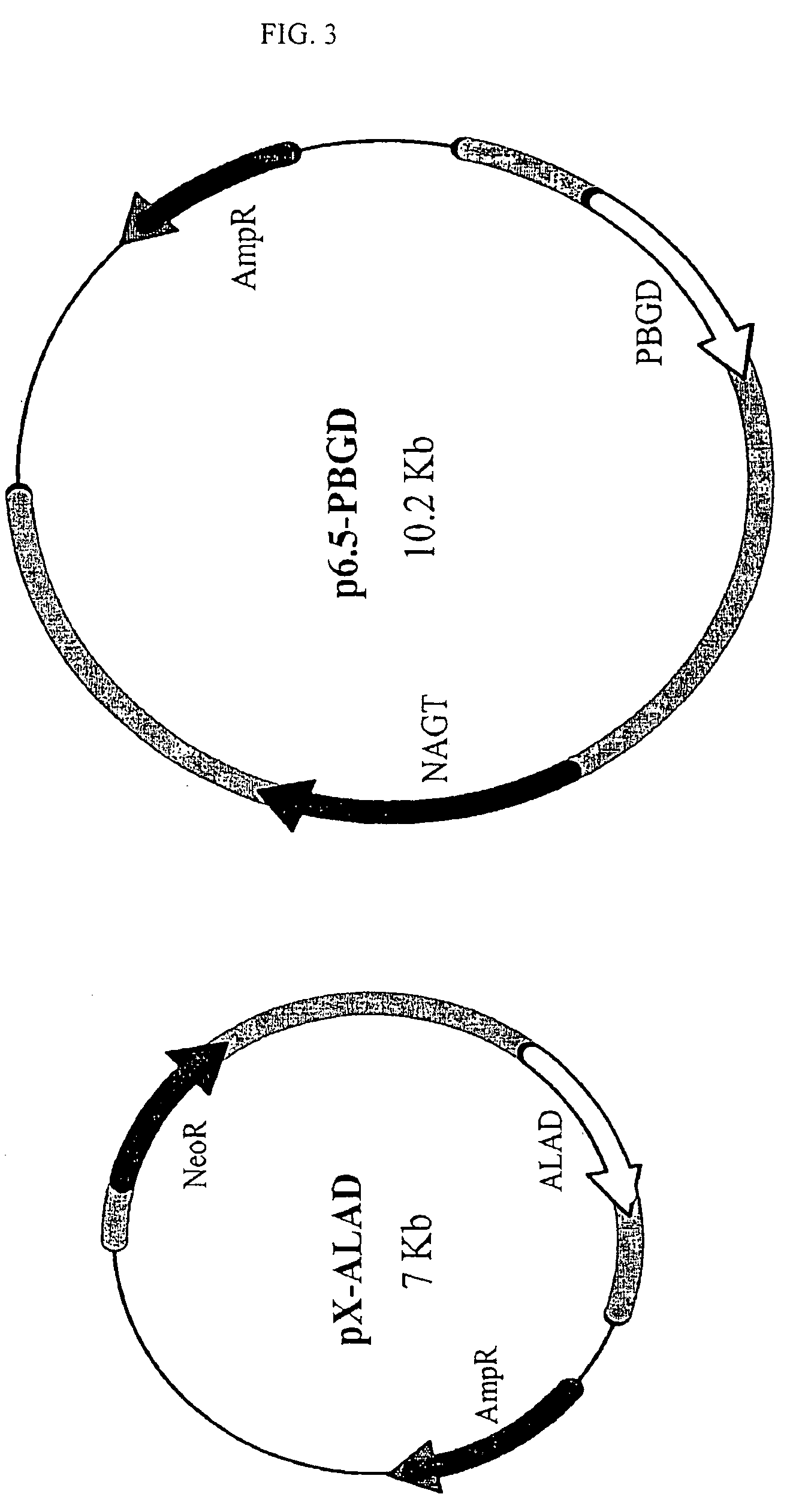Suicidal mutant Leishmania vaccine
a technology of mutant leishmania and vaccine, which is applied in the direction of biocide, antibody medical ingredients, genetic material ingredients, etc., can solve the problem of residual pathogenicity of all live vaccine models, and achieve the effect of reducing the number of intracellular amastigotes
- Summary
- Abstract
- Description
- Claims
- Application Information
AI Technical Summary
Benefits of technology
Problems solved by technology
Method used
Image
Examples
example 1
Cell Cultures
[0064]Wildtype Leishmania amazonensis (LV78) promastigotes (clone 12-1) were grown at 25° C. in Medium 199 Hepes-buffered to pH 7.4 and supplemented with 10% heat-inactivated fetal bovine serum (HIFBS). Transfectants were grown under similar conditions with different concentrations of selective pressure, i.e., G418 and / or tunicamycin. Cells were also adapted to grow in a chemically defined medium. To initiate such cultures, cells were washed twice with the defined medium by centrifugation at 3,500 g for seeding at 2-5×106 cells / ml. Cells were counted using a hemacytometer. Macrophages (J774A1) were grown in RPMI 1640 supplemented with 10% or 20% heat-inactivated FBS at 35° C. Cultures of all cells rendered porphyric were kept in the dark to avoid cytolysis due to photosensitivity.
example 2
Cloning of the cDNAs
[0065]FIG. 3, which illustrates an example of an embodiment of the present invention, shows constructs of mammalian genes encoding porphobilinogen deaminase PBGD and δ-aminolevulinate dehydratase ALAD in p6.5 and pX vectors specific for transfection of Leishmania, respectively. Gray arrowed bars represent ampicillin resistance gene (AmpR). The thicker gray area is Leishmania DNA containing neomycin phosphotransferase gene (NeoR) and N-acetylglucosamine-1-phosphate transferase (NAGT) (dark arrowed bars) as selectable markers of Leishmania for G418 and tunicamycin, respectively. Arrow indicates the direction of transcription.
[0066]The cDNA of rat PBGD (1038 bp) (Accession # X06827) was obtained by digesting the plasmids with BamHI. The human ALAD (993 bp) (Accession # M13928) was amplified by polymerase chain reactions (PCR) from a cDNA cloned in pGEM-T vector using a high fidelity Taq polymerase (Expand Hi Fi, Boehringer). The forward and reverse primers used were...
example 3
Western Blot Analysis
[0067]Stable transfectants grown in Medium199 supplemented with heat-inactivated FBS and selected with appropriate drugs were assessed for the presence of ALAD and PBGD by Western blot analysis. Briefly, protein samples each equivalent to 20×106 cells were subjected to SDS-PAGE using MiniProtean II (BioRad) and blotted to nitrocellulose. The primary anti-PBGD and anti-ALAD antisera were generated by immunization of rabbits with purified enzymes. Both were used at 1:105 dilution. Peroxidase-conjugated goat anti-rabbit IgG (Sigma) was used as the secondary antibody. Immunoblots were subsequently developed with the ECL reagent (Amersham) and exposed to X-ray films.
[0068]Western blot analysis of various cell lysates revealed that both enzymes were undetectable in the wildtype (FIG. 4, Lane 1) and appeared as specific protein bands of the expected size (FIG. 4, Lanes 2-5) in the transfectants. Probing the blots with anti-ALAD antiserum alone revealed a single band of...
PUM
| Property | Measurement | Unit |
|---|---|---|
| pH | aaaaa | aaaaa |
| concentration | aaaaa | aaaaa |
| concentration | aaaaa | aaaaa |
Abstract
Description
Claims
Application Information
 Login to View More
Login to View More - R&D
- Intellectual Property
- Life Sciences
- Materials
- Tech Scout
- Unparalleled Data Quality
- Higher Quality Content
- 60% Fewer Hallucinations
Browse by: Latest US Patents, China's latest patents, Technical Efficacy Thesaurus, Application Domain, Technology Topic, Popular Technical Reports.
© 2025 PatSnap. All rights reserved.Legal|Privacy policy|Modern Slavery Act Transparency Statement|Sitemap|About US| Contact US: help@patsnap.com



